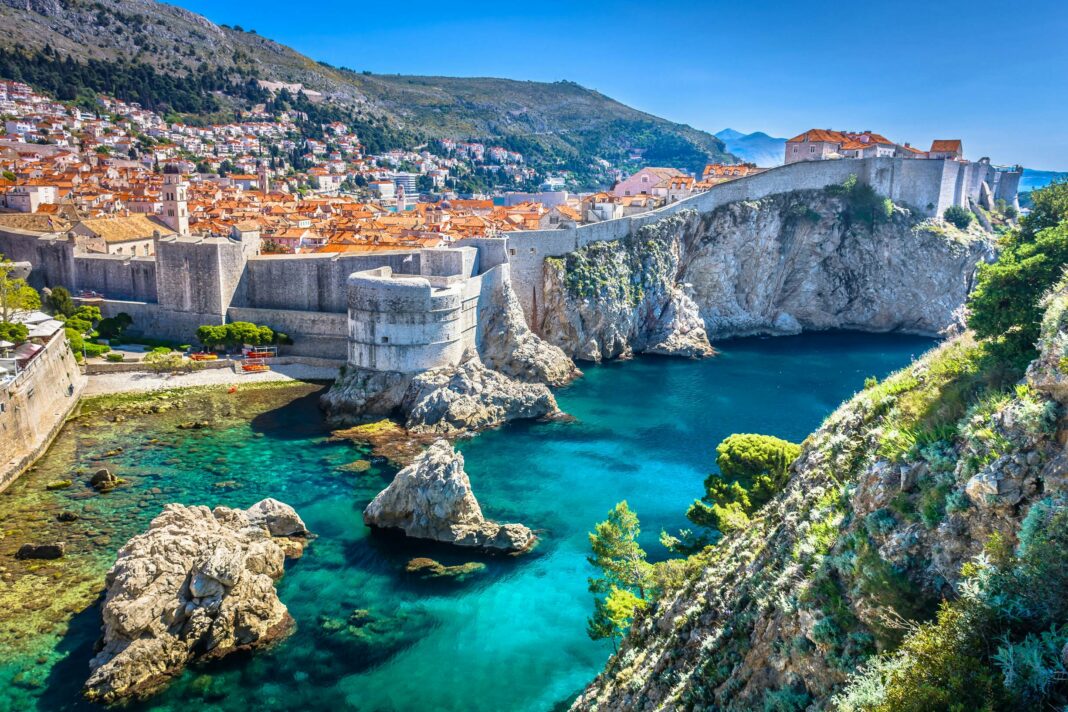Leisure Pursuits In Dubrovnik Croatia :
1. CABLE CAR IN DUBROVNIK:
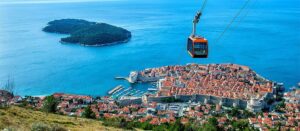
If you find yourself with children in Dubrovnik or nearby, be sure to visit the Old Town, which is in perfect condition today. Walk along its free narrow streets, look at the central street Stradun, which becomes especially lively after 7 pm, explore the entire territory of the settlement with its three-story white-stone houses in the style of Mediterranean Renaissance architecture. If you have admired the fountains, palaces and cathedrals and want something new, then we recommend that you look at the Adriatic coast near Dubrovnik from the heights of Mount Srd, which you can climb by cable car.
We would like to dwell on it in more detail. The local funicular, which takes tourists to the observation deck of the Srd peak, is a kind of highlight of Dubrovnik, a local landmark. This cable car is unique – it is the only one on the entire Adriatic coast. The views that open up to travelers from its cabins are capable of delighting and charming even the most severe skeptic, what can we say about little connoisseurs of natural beauty? The history of the funicular connecting the Old Town and the observation deck on the mountain began back in 1969. It was then that the first cable car on the coast was opened, capable of delivering 15 people to the top in the cabin at a time.
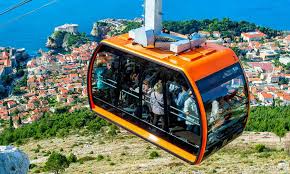
Alas, but a little more than 20 years ago, in 1991, the funicular was almost completely destroyed during a local war. Its restoration lasted a very long time, and finally, in the summer of 2010, the updated cable car to Srd resumed its work. Its design is two orange cabins, designed for 30 people each. Their speed is 6.5 m / sec. In an hour, the funicular is capable of transporting up to 500 people to the observation deck. Its lower station can be reached from the northern walls of the Old Town. The final point – the upper station – is located approximately 405 meters above sea level. This height is quite enough to properly admire the beauty of the local nature, picturesque views of the Dinaric Highlands and enjoy the panorama of Old Dubrovnik.
Here you can go to the amphitheater, designed for 250 seats, or to one of the two panoramic terraces, from which it is most convenient to look around the surroundings of the mountain. Also at the upper station there is a historical museum dedicated to the defense of Dubrovnik in 1991-1992 during the war in Croatia. The ascent to the top will not take much time – just 3-4 minutes from the Ploče station to the Srd station, and you are there! If you and your children manage to get hungry during the ascent, it is not a problem: there is a small cozy restaurant on the observation deck where you can have a good snack and drink a cup of excellent coffee. We recommend going on this excursion no earlier than 4-5 pm, because at midday the ascent is quite difficult due to the heat.
2. MARITIME MUSEUM AND AQUARIUM:
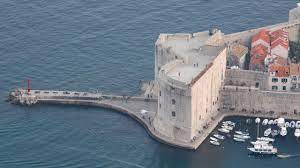
Dubrovnik is a city of great opportunities. This is especially true for holidays with children. A large number of places that can be visited with a child are within easy reach. One of them is the St. John’s Fortress, which houses several interesting exhibits – the Maritime Museum and the Aquarium. The Castle of St. John itself is extremely interesting. It is one of four large city forts, which began to be built in the 14th century. In the past, the fortress served as a reliable shield for the city harbor, repelling not only large waves during hurricanes, but also enemy raids.
The fact that the fortress was systematically rebuilt and restored is evidenced by its walls. The fort has existed in the form in which we are accustomed to seeing it today since the 16th century. The Castle of St. John was restored after a strong earthquake in 1979 and opened for regular visits in 1986. A visit to the Dubrovnik Maritime Museum will be more enjoyable for boys. Although for general development, we would also recommend that girls visit the exhibition dedicated to the history of navigation and shipbuilding in Dubrovnik and the surrounding region. There is really something to see here: a rich collection of flags, maps and navigation devices, many interesting models of sea vessels and naval weapons dating back to the 17th-19th centuries. There is a whole collection of portraits of captains and paintings depicting typical scenes from the life of sea wolves.

About 4,000 exhibits are presented to the attention of guests of the Maritime Museum. The local library, which contains quite rare old books, documents and archival materials, has high historical value. On the first floor of the fortress there is an Aquarium. Be sure to visit it – this exhibition will interest children of any age. About 30 aquariums of various displacements with running water demonstrate to guests exhibitions of the inhabitants of the underwater world of the Adriatic. In the stone gallery, which impresses with some other, alien atmosphere, there are aquariums with corals, starfish, sponges, anemones, lobsters, crabs and lobsters, anemones, shells with mollusks, turtles and countless fish – grouper, brown and green wrasses, rays, eels, dorado, moray eels, mullet, langoustes.
Do not forget to show the children the aquarium, which clearly shows the process of pollution of the Adriatic Sea. It will be very useful for children to learn about the state of the local ecology. It is better to combine excursions to the Maritime Museum and the Aquarium, because it is not only convenient (the exhibits are located in the same building), but also united by one water theme. And children, as we know, are very interested in everything related to the sea, its history and underwater inhabitants.
3. RAFTING:
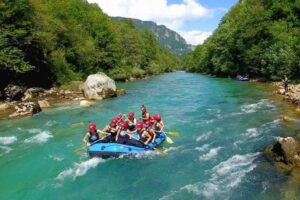
People come to Croatia not only for the gentle sun and bronze tan, but also for thrills. Extreme sports enthusiasts will find excellent waterways here, along which they can raft with virtually no restrictions. Some rivers have particularly steep rapids, they are suitable for advanced raft users. For beginners, there are smaller and calmer rivers. Older school-age children will be very interested in rafting with their parents along one of the Croatian rivers with crystal clear water. In other words, everyone will find something for themselves in this dynamic entertainment.
It is worth noting that most of the local waterways belong to the third (that is, average) level of difficulty, but there is a small percentage of rivers of the fourth level, designed for real extreme sports enthusiasts. And yet, by and large, rafting in Croatia is a safe rafting on mountain, but fairly calm rivers on inflatable boats.
The rivers that are especially popular with tourists are:
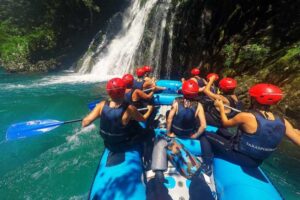
- Kupa;
- Mreznika;
- Korena;
- Una;
- Crmendzha;
- Krka;
- Cetina.
We would like to pay special attention to two rivers from this list, as the most visited and safest for family rafting. The Kupa River flows through the territory of Northern Dalmatia, tourists raft through the Risnjak National Park. This is where the river originates. A trip to Kupa for rafting is convenient for vacationers in the Istria and Northern Dalmatia region. Kupa gives birth to a small karst lake, the waters of which shine with a pleasant turquoise color. Kupa is different. At the source it is stormy and fast, closer to the middle – calmer and more leisurely. This is one of the longest rivers in Croatia, its length reaches 296 km.
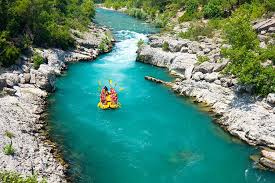
The Kupa is especially beautiful in its lower reaches: tourists on rafts have incredible views of artificial waterfalls that were once used to operate mills. Extreme sports enthusiasts overcome five rapids in the mountainous part of the river. Rafting on inflatable rubber boats is usually done exclusively during the period of “high water”, while river trips along the Kupa in a kayak and canoe can be done all year round. The river is especially beautiful in the summer: there are many places for recreation on its banks. Tourists come here to sunbathe, swim, fish, and have picnics. Another very picturesque river that travelers have chosen for rafting is the Cetina, which originates 7 km from the village of the same name. The river passes several dozen kilometers from the resort town of Split. Tourists vacationing at the resorts of Central and Southern Dalmatia can be recommended rafting on the Cetina.
The river has many merits – it is the one that formed a very picturesque canyon, where today a large number of plant species grow. The beauty of the banks of the Cetina amazes even seasoned tourists. Beautiful cascades, fast waterfalls, mysterious caves and babbling streams – you will certainly encounter all this while traveling along the river. Only rafts are allowed to travel along the Cetina. By prohibiting motorboats, local authorities care about preserving the pristine nature. The features of the Cetina include rare and not very high rapids and close rocky banks. The conqueror of the water element should be careful: one wrong move, and you can hit the coastal rocks hard. IMPORTANT: For rafting, we recommend taking with you shoes that hold your foot firmly (boots or sneakers with laces), a towel, a swimsuit, sunglasses.
The cost of a rafting excursion along the rivers of Croatia already includes the price of:
- boats;
- rental of equipment;
- for the services of an instructor;
- transfer to the starting point;
- rafting;
- meals during the break;
- insurance.
4. ARBORETUM TRSTENO:
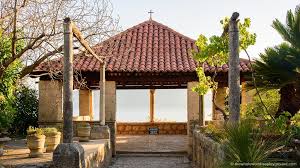
The only arboretum on the Croatian coast, the Arboretum, is located on 25 hectares in the small village of Trsteno, 18 km north of Dubrovnik. Created at the end of the 15th century by the famous philosopher and aristocrat from Dubrovnik Ivan Gučetić, today the arboretum is one of the largest botanical gardens in the country. The flora of the Arboretum is its main wealth and value. Be sure to visit the arboretum with your children, because in this unique green garden you can admire not only the oldest plants, but also explore a well-preserved agricultural estate that once belonged to the aristocratic family of Gučetić-Gozze.
Little travelers will be interested in simply running along the cozy shady alleys or, for example, feeding the fish and turtles peacefully living in the local fountain. The basis of the arboretum in those distant years was formed by plants that arrived on the ships of seafarers. With each decade, the botanical garden grew and expanded. Today, the Arboretum is divided into several segments, differing in theme and purpose. Thus, you can visit a historical garden in the neo-romantic style, a Renaissance garden, where a summer residential estate stands, an ancient olive grove and see with your own eyes the natural vegetation of shrubs, conifers, oak and coastal sea walls.
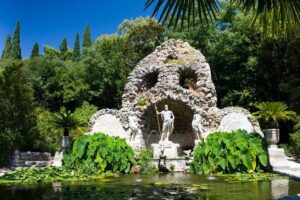
Visitors are especially impressed by old camphor trees, giant ancient plane trees, bamboo, rare species of palm trees and other exotic plants. However, the Croatian arboretum is famous not only for its vegetation. The estate is also famous for its ancient aqueduct, built about 500 years ago. This water system creates a real oasis in the botanical garden, softens the harsh stone environment and harmonizes with the lush green vegetation. By the way, the aqueduct is still in working order today, with its help the owners manage to fully irrigate a huge number of local plants. Do not forget to pay attention to the oldest trees of the arboretum growing next to the aqueduct: American linden, ginkgo, Himalayan cypress, tulip and coral tree, Lebanese cedar.
They are over 145 years old! The local chapel of St. Jerome is also beautiful, and the baroque fountain, which is decorated with a sculpture of Neptune surrounded by slender nymphs, and a gazebo with an open veranda. Its windows offer a stunning view of the Adriatic Sea. By the way, the botanical garden is famous not only for its flora, many species of birds live here. The hummingbirds are a special pride of this green paradise. Thanks to the many shady alleys, a trip with children to this amazing place will be comfortable and pleasant even on the hottest day.
5. LOKRUM ISLAND:
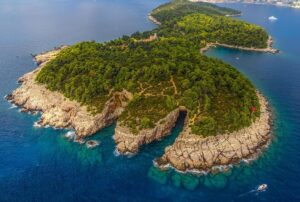
When mentioning the beaches of Dubrovnik, one cannot miss such a truly heavenly place as the island of Lokrum – a quiet haven loved by all locals without exception. Lokrum is notable not only for its clean and extensive beaches, but also for its historical and natural monuments. Therefore, tourists vacationing in South Dalmatia with children should definitely pay attention to this isolated quiet land in the Adriatic Sea. Lokrum is a real nature park – small, but green and very clean.
It is here that you can perfectly relax from the bustle of the city, take a breath of fresh sea air and sunbathe. Getting to Lokrum is very easy – every half hour a small boat leaves from the Dubrovnik pier. Literally 10-15 minutes of a pleasant boat trip and you are there. If you are not a fan of beach holidays, you will still find something to do for yourself and your children. Take a walk to the Benedictine monastery, founded at the beginning of the second millennium AD. Around it there is a lovely botanical garden with neatly trimmed bushes, olive trees, cacti. Locals say about it: “Everything is different and green.” Indeed, an exhaustive description.
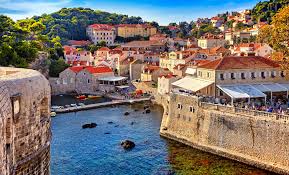
Children of all ages are especially delighted by the peacocks, freely strolling along the lawns and paths of the garden. Do not look for them – they will find you themselves, because there are a great many of them here. If the child is lucky, he will find a peacock feather and take it home with him as a trophy. Another local attraction is a perfectly preserved star-shaped fort, proudly bearing the name Forte Royale. This is a local historical monument. The structure was erected during the time of Napoleon on the highest point of the island. In those distant years, the fort ensured control of the Dubrovnik harbor, but today it provides guests of the island with an excellent opportunity to enjoy the amazing view of Dubrovnik from the sea. You can climb up to its ruins and feel the spirit of the times, but only if you have comfortable shoes, a hat, and a bottle of cool water in your bag, because in the heat the climb to the building is quite difficult.
Be sure to visit with your children a small lake located in the very center of the island – Mrtvo More or the Dead Sea. Why Dead? Because it is very salty. The lake is connected to the Adriatic Sea, perhaps for this reason the water in it is crystal clear and calm. Its shores are a favorite vacation spot for Dubrovnik residents and guests of the resort. You can arrive on the island of Lokrum in the morning and spend the whole day there. There is a small cozy restaurant here – you will definitely not go hungry, but you must sail away with the last boat, which leaves the pier at exactly 19:00. Staying overnight on Lokrum is prohibited – the island is a protected area and a special reserve of forest vegetation of Croatia.
